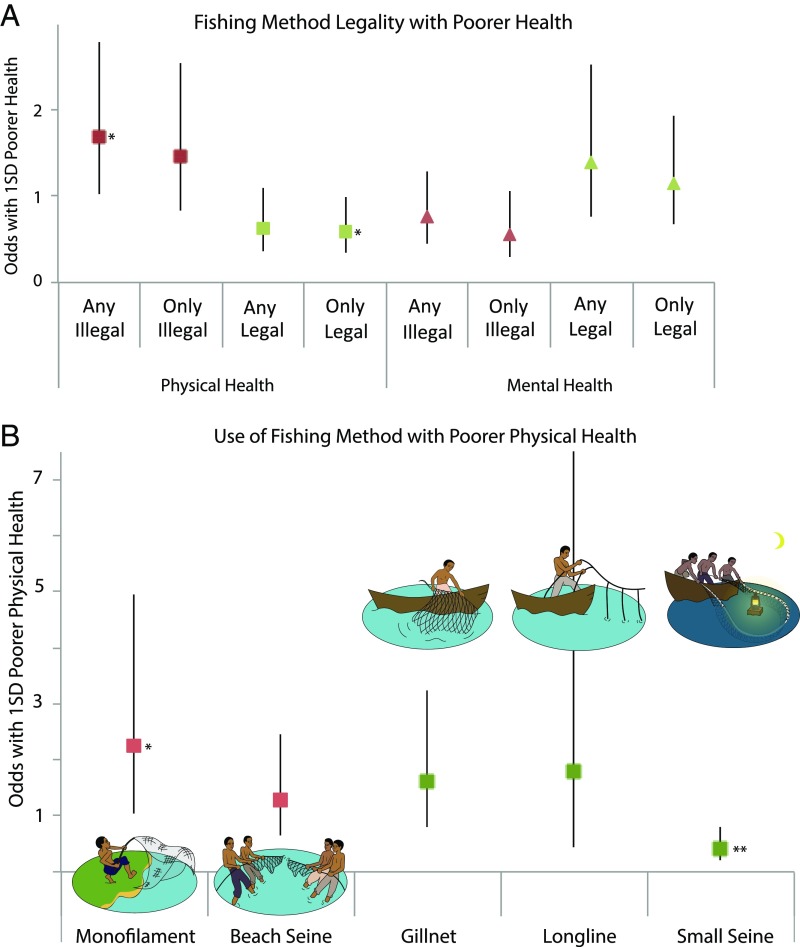Fig. 3.
ORs of (A) fishing method legality and (B) fishing with a particular method. ORs for poorer physical health (A, B) and poorer mental health (A) and 95% confidence intervals (vertical lines) are derived from full conditional fixed effect logit models (Tables S6 and S7) among individuals who report participation in fishing in the preceding 3 mo. In the Lake Victoria fishery, five fishing methods predominate. Three methods—long line, gillnet, and small seine for dagaa—are legal offshore methods (green) and subject to regulations designed to provide for fishery sustainability, including mesh dimensions, hook sizes, and movement patterns. Two methods—beach seine and monofilament—are focused on inshore regions (red), and although outlawed by fishery regulations because they are environmentally destructive, they remain widely practiced (51). Odds are for 1 SD poorer (A, Left) physical health and (A, Right) mental health as well as (B) physical health comparing across individuals who sometimes participated in fishing methods. Models include a full set of time-variant covariates (physical health, mental health, income, fishery role, and time point). Where the 95% confidence intervals cross one, the association is not statistically significant. *P < 0.05, **P < 0.01.

